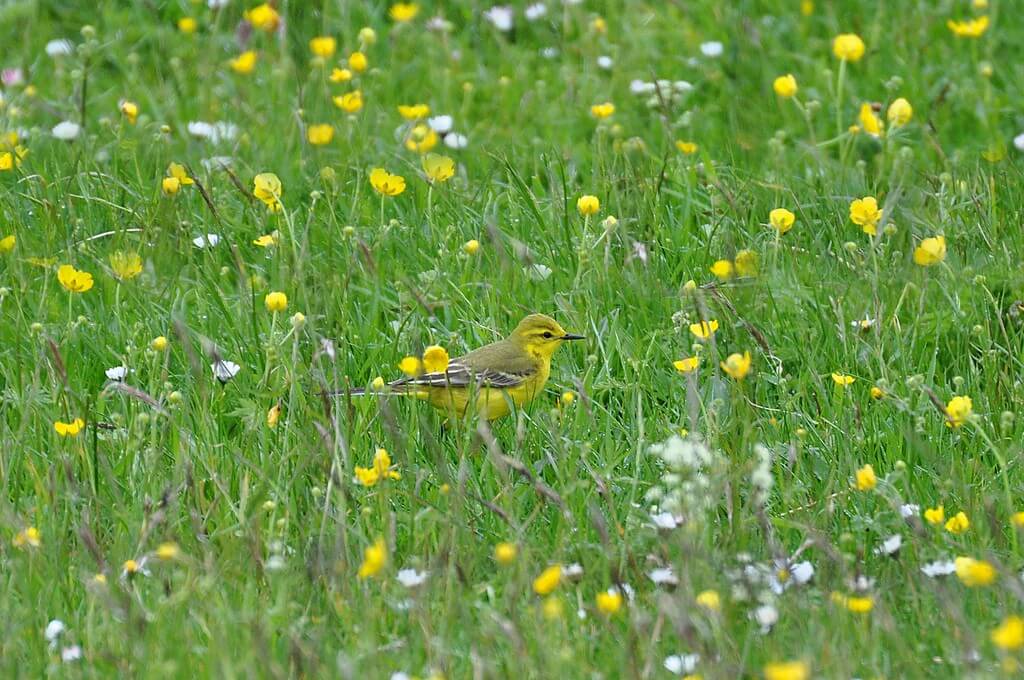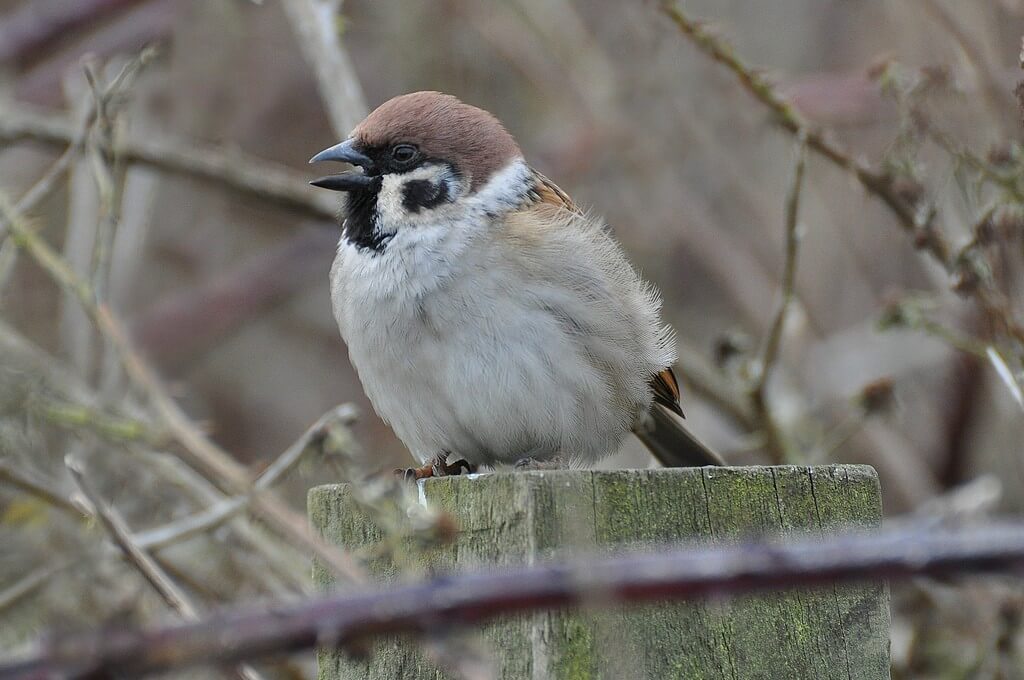
Photo: Tim Melling
In 2014 the numbers of farmland birds (as measured by overall trends in 19 species – see below) were at the second lowest level of the last 45 years (since, almost, records began). Guess what? The lowest level was in 2013! This is not a record of which any politician can be proud.
The farmland bird index was adopted as an indicator of environmental sustainability by the previous Labour government and quietly shelved by the coalition government in 2010.
The aggregate population levels of farmland birds are less than half of their 1970 level – and have been for years and years. The decline continues, though less rapidly than in the 1970s, with an 11% decline in the last five years covered by this update. Things are bad, and continue to get worse, despite all governments promising to make it better and despite hundreds of millions of pounds being given to farmers to improve the farmed environment every single year.
Defra ‘released’ the figures on the day that IUCN released the global red list. A good day to bury bad news perhaps? They are very difficult to track down on the odious Gov.uk site and I can find no sign of Natural England or Defra publicising this inconvenient news. Liz Truss did not appear to have said anything about the fact that farmland birds have continued to decline throughout the period of a Conservative Secretary of State at Defra.
Although actually, it’s not news. This is the normal situation in UK farmland – it keeps getting worse for wildlife.
Defra is not doing its job properly.

Photo: Tim Melling
The 19 species on the farmland bird index are: Grey Partridge, Kestrel, Lapwing, Wood Pigeon, Stock Dove, Turtle Dove, Jackdaw, Rook, Skylark, Starling, Yellow Wagtail, Whitethroat, Linnet, Greenfinch, Goldfinch. Yellowhammer, Reed Bunting, Corn Bunting, Tree Sparrow.
[registration_form]
Hedges cut at wrong time of year and too frequently,margins if present mismanaged,crops sprayed to death. No winter food,no food for chicks,no cover etc not rocket science why bad news for bad news for birds! Easy to sort out with changes in legislation and funding but not going g to happen as NFU run government !
Hedges cut at wrong time of year??.Question is what time of year would you like them cut and when do you say the majority of household hedge owners cut their hedges.
Farmers have in general a relatively short period from August to November to get all the hedges cut,after that the land is often too wet and conservationists will tell you heavy machinery should keep off the land to avoid compaction and run off of water.
Mark, I’m not sure that this Government *really* sees managing the environment as its job, never mind Defra. Their entire philosophy is built around less state interference and regulation, and don’t you know an Englishman’s home is his castle… It’s a thoroughly depressing state of affairs. That biodiversity continues to drop down the pan is an inconvenient truth, one to which the answer is simply ignore it or at best shuffle the chairs on the deck and create another set of targets that will never be met. It’s been clear that a new conservation paradigm is needed for years, it’s what Lawton essentially recognised, but delivering it would require behavioual change and tough regulation, and as said at the beginning that’s a no no.
john – indeed. You should come back at lunch time to read a blog about regulation…
Slightly off-topic, but what is the point of ‘targets’, in any sphere of government work?
Do any ever get met?
I wonder if ‘setting targets’ is a substitute for action. Intended just to fob us off.
Also, again in any field of activity, what is the point of ‘voluntary regulation’?
If people were willing to commit to this they’d have been doing it voluntarily in the first place.
Marian – you too, should read my blog at lunchtime today.
Maximised intensification….. it leaves no time or space for wildlife. We need a Tardus for Turdus.
As a farmer I get very angry being tarred with the wildlife destroyer brush. We currently have about 14% of our land in environmental options plus over 14km of hedgerows. The biggest destroyer are the public who daily use the margins for dog walking,bike riding, or horse riding. The bird seed is good for dogs to run in. The local deer population has just been slaughtered by the dog and lamp people. Oh and don’t forget the air rifle brigade who shoot anything that moves, wildlife,pets and tractor drivers! It is not all our fault, I only wish some of these commentators could see life on the edge, the urban fringe where ANY wildlife is a fair target especially if it gets in the way of a daily dog walk!
william – where were farmers blamed? Guilty conscience perhaps?
“where were farmers blamed?”
Third paragraph final sentence
William, it is great to hear that you have 14% of your land in environmental options and 14 km of hedgerows and also that you appear to care about the loss to wildlife. I think that you are wrong, though to suggest, as you appear to do, that the decline of farmland birds (and other farmland wildlife) is down to the misbehaviour of the general public, walking dogs, riding horses and so on. As it appears that you farm on the urban fringe I don’t doubt that these are genuine problems that you experience and I do not condone them in any way, but it is stretching credulity to suggest that they are the cause of the declines in a wide range of birds across the entire countryside.
Since the second world war British agriculture has changed immensely in lots of ways with changes in cropping (e.g. the switch from hay to silage and the switch to almost entirely winter sown cereal crops), increased use of agrichemicals, land drainage, hedgerow removal and other improvement measures. These changes have resulted in impressive improvements in crop yields but it is very clear that on the whole they have been inimical to wildlife.
It is emotive and unhelpful to refer to farmers as ‘wildlife destroyers’ as if they are on some evil mission to kill every last songbird and trample every last wildflower; the damage to wildlife is an unintended consequence of farmers doing their best to run their businesses and provide for their families. With an overdraft to pay and other creditors breathing down their necks one cannot blame farmers for seeking to maximise their earnings from the land they manage but neither can we ignore the fact that this is often detrimental to wildlife.
Farmers operate within an economic and policy environment that constrains their choices and so the answer must surely be for the politicians to adjust the policy framework so that it becomes economical for farmers to make more wildlife friendly choices. That is the point of stewardship schemes but – whilst I have no way of knowing how successful your own measures are, the data on bird populations indicate that overall these schemes have not been successful in stemming the decline of farmland birds. This does not mean that in principle they cannot be. The RSPB and others have demonstrated that the right mixture of techniques can have a positive effect on farm bird populations and clearly many farmers are willing in principle to implement such measures but we need to amend the subsidy regime so that it is tilted much more in favour of implementing an effective mixture of measures widely throughout the farmed landscape.
I presume, given that you inform us that you have implemented environmental measures on your own land, that you do recognise there is a real need to take steps to ensure that there is a place on farmland for birds. You should not take it personally when this need is pointed out by others.
no guilty conscience, just fedup getting the blame and seeing all our hard work being trashed. Oh and we also get fined by RPA when walkers use our margins.
‘The lowest level was in 2013! This is not a record of which any politician can be proud.’
Here i have to disagree, i am sure they will call this an improvement or signs of hope. Like the Hen Harrier numbers this year.
That defra paper is hard work. The links are given with wrong titles. It really looks like they don’t want anyone to read it.
On the seabird section of the main paper it says ‘…since the beginning of the index, three species have decreased, and the remaining eight species have shown no change.’
I wanted to find out what the other declining species was and found that actually 4 (not 3) species have declined, the other 2 being Common Tern and European Shag (both weak decrease). With 7 (not 8) species unchanged.
I couldn’t see any indication that the caveat ‘since the beginning of the index’ exempted any species but I presume there must be a reason for the discrepancy.
I would hardly call the -51% decline (since 1986) of Shag a ‘weak decline’ and the ‘weak decline’ for Common Tern is -26%.
Six of the ‘change species’ range from -10% to -21%. The seventh ‘no change’ is +15% for Arctic Tern.
A quick link to the stats is
https://www.gov.uk/government/statistical-data-sets/env07-wild-bird-populations-in-the-uk
Sorry should read
Yikes this time not me but something technical.
I’ll try again.
Should read ‘Six of the ‘no-change species’ range from -10% to -21%’
For some reason i am having a problem posting. Think it didn’t accept those side arrows i was using as quotes. I’ll try again with different symbols.
Correction
Should read “Six of the ‘no-change species’ range from -10% to -21%”
“I would hardly call the -51% decline (since 1986) of Shag a ‘weak decline’ and the ‘weak decline’ for Common Tern is -26%.”
That’s clearly a typo as they also describe the -21% short term decline as a strong decline for the shag.
Forget all the rubbish about hedges,the fact is there in the figure released today I think.
Goldfinch numbers up 80%,no increase in hedgerows simply more food for them 365 days a year.
When the real solution is promoted and put in place things will improve as proven by this species,of course it will probably be too late because red herring of hedges seems more important to almost all conservationists and bird lovers fed this myth for decades.
Just look at the facts about Goldfinch.
I am not suggesting it would solve all farmland bird problems but would certainly help tremendously about three quarters of those birds mentioned.
There is a desperate need for RSPB to lobby for scheme change to give more of the scheme money for wild bird crops,it may not be their job in some peoples eyes but seeing as farmers and NFU are not going to lobby for that change who else will and RSPB have a responsibility simply by those initials.